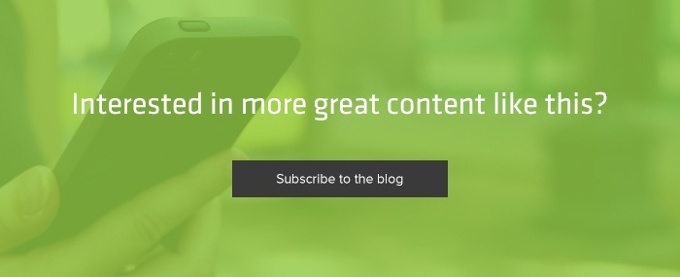The Growing Scope of Customer Communications Management
What do you think of when you hear the term “customer communications management”? Most people think of letters, statements, privacy notices, and other documents and correspondence that traditionally have been produced in large batches and mailed to customers en masse. Many people now include digital versions of those communications in their understanding of CCM, too. And some are seeing the expansion of traditional customer communications across any and all channels, throughout the customer journey, and into the broader customer experience.
In fact, you may be surprised to know that an agile and forward-thinking CCM solution like INTOUCH® (coming soon) can now integrate much more fully with your CX architecture and serve a wide variety of business needs that haven’t previously been associated with problems CCM can solve. Examples include creating personalized interactive correspondence, enrollment kits, contracts and policies, member ID cards, notices and disclosures, and more.
How? INTOUCH is the only CCM solution where non-technical business users will be able to independently create channel-independent content, digital-first layouts and responsive templates; manage business process workflows and compose powerful business logic; and deliver personalized communications and track them across multiple channels.
The Rise of Information Design
A big factor in changing customer expectations has been the rise in importance of information design – how documents look, their readability, their overall effectiveness at conveying facts and ideas. As people grow more and more accustomed to highly visual, thoughtfully designed user experiences (UX) and user interfaces (UI) in the digital world, their expectation is that they will get similar experiences across the board. They become easily frustrated and annoyed at any communication that is difficult to comprehend or act upon, which factors into their overall feelings toward a brand and perception of their experiences with it.
Therefore, how communications look has become much, much more important in recent years. In fact, as unscientific proof of that, I just got an email this weekend from my electrical and gas utility to say they’re changing their statements to be more readable and useful to customers. When even utilities start caring about how their mundane, been-the-same-for-decades bills are designed, you know information design is important! So we at Topdown are making it a priority to empower business users to design documents that are consistent with brand guidelines, professional and clean-looking, as well as easy and effective for customers to consume.
In light of this, every company and industry should reexamine the customer communications they’re sending out through the eyes of their customers. Look at each type of communication the way your customers see it so that you can identify areas for improvement in process, content and design to take full advantage of your CCM software’s strengths and improve your overall CX.

The Roots of CCM
The reason many people don’t realize the power and potential of modern CCM software is because, though it has always played an important role in customer relations, it has had a relatively narrow scope in the past. CCM started out focused on structured batch communications like statements, explanations of benefits and form-letter-like correspondence. For the most part, other tools in other departments took care of customer communications that were more personalized, timely or unique, such as marketing communications or real-time issue resolution. CCM was largely print-based and disconnected from marketing, commerce, and even customer service. The documents produced by CCM software came out after the fact, so to speak – it was a look back at what had happened already, not a snapshot of right now or a call to action for the future.
In recent years, though, we’ve begun to see a consolidation around customer communications – there’s a general acknowledgement that all customer communications need to be consistent across customer journeys, and that journeys span across organizational silos. Consequently, there’s a movement afoot to condense and simplify the number and types of communications, ensure they’re serving the greater customer experience, and better integrate the communications that remain.
Since CCM does personalization, business logic and automation better than any other type of digital experience (DX) delivery tool, it makes sense for CCM to take on a more central role in companies’ CX architecture. We are already set up to do the heavy lifting of customer data and asset integration, template design, version control and review processes, and more – all capabilities you need to empower business users and keep all your communications consistent, relevant, easy and efficient for each and every customer at each and every touchpoint with your brand. In other words, you may not be taking full advantage of your CCM tool’s strengths, or you may need a more powerful CCM tool that can do these things for you.
CCM’s Expanding Scope
At Topdown, we have been branching out in response to changing end-customer expectations and behaviors and our own customers’ need for innovation. We know, like you do, that customers’ experiences around communications have been enhanced far beyond simply opening and reading a letter or statement. Now customers using all kinds of devices expect to be able to interact with content by: receiving content immediately upon demand; e-signing and digitally returning documents; customizing the way they view or organize the data in statements or transaction histories; being served marketing messages that are relevant to their purchase history, interests and customer data; and so on.
Even with our traditional bastions of interactive CCM like claims, member management, customer service, etc., the number and types of communications have increased tremendously over the years. It has pushed us and our clients to get creative. For example, we have customers using our products today to create things like ID cards, enrollment kits, and other non-correspondence communications. We are making our new software as flexible and adaptable as possible so that our customers can solve any new communications problems that come their way as the marketplace continues to evolve.
Our blog is chock-full of great information about how you can use CCM to improve CX. Subscribe to get the latest from Topdown and the world of CCM.







